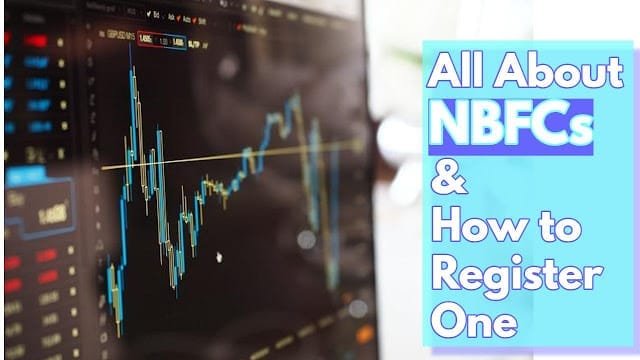Understanding Target Audiences
Importance of Targeting
Zeroing in on who you’re trying to reach is crucial for any marketing game plan. Knowing your crowd lets businesses whip up marketing blueprints that actually hit the mark and make those ad dollars count (Marketing Evolution). Figuring out exactly who you’re speaking to can help divvy up your marketing effort, keep up with changing trends, beef up ROI big time and cozy up to consumers. Breaking down your audience can transform marketing efforts, sometimes skyrocketing profits by a massive 760 percent (HBS Online Blog).
| Benefits of Targeting | Impact |
|---|---|
| Segmentation | Offers custom marketing experiences |
| Adaptability | Allows tweaking based on audience habits |
| Return on Investment | Boosts marketing spend success |
| Consumer Relationships | Forges trust and loyalty |
Known vs. Unknown Audience
You’ve got two kinds of folks you’re chatting up: those you know and those you don’t. The ones in the know have already got the scoop on the brand’s offerings. On the flip side, the unknowns are just learning who you are and are still mulling things over (Sender.net). Identifying these groups is a step in crafting any solid marketing plan.
| Audience Type | Description |
|---|---|
| Known Audience | Clued in on the brand’s details |
| Unknown Audience | Just discovering the brand’s story |
Spotting the nuances between familiar faces and new prospects lets companies play their cards right. Curious about diving deeper? Check out target audience analysis and how to define target audience. Grasping both known and unknown profiles can really turn the dial on your marketing efforts and elevate total effectiveness.
Demographic Segmentation
When you’re figuring out who’s buying your stuff, demographic segmentation is the real MVP. It’s the art of breaking down a gigantic market into bite-sized pieces with a focus on folks’ traits that sway how they shop. Knowing these nuggets of info lets companies whip up marketing magic that clicks with each unique crowd.
Key Factors
The big players in demographic segmentation are age, gender, nationality, education, and income. By giving these elements a once-over, businesses can tweak their offerings to vibe well with different crowd favorites. Let’s break it down:
| Demographic Factor | Whatcha Need to Know | Why It Matters for Marketing |
|---|---|---|
| Age | Think Gen Z, Millennials, Gen X, and Baby Boomers—all with their own quirks and moola patterns. | Spin your merchandise and pitches to suit age-specific likes and grumbles. |
| Gender | Guys and gals shop with their own flair. | Cook up campaigns that zero in on what each gender is jonesing for. |
| Nationality | Culture calls a lot of shots on what folks buy and how. | Frame your selling techniques and goodies to mirror cultural vibes. |
| Education Level | More school can mean particular lifestyle picks and spending choices. | Tweak your tactics to chat them up—think fancy products or exclusive experiences. |
| Income Level | Pockets can dictate what and how people buy. | Craft resonant messaging for different wallets, offering just the right spice of promo deals. |
Cracking open these segments gives a company the lowdown on who’s who in their consumer zoo. For more deets on target audience demographics, dive deeper into what tweaks your marketing mojo.
Insights for Understanding Customers
Peeking into how people shop your goods sheds light on the why behind those purchases. Market research, polls, and people chatter—find out what tickles their fancy and guide your strategy to meet them halfway.
Studies show those with a bachelor’s diploma or more tend to splurge more on fun stuff, blowing up 70% of spending at local spots (White Hutchinson). Plus, their spending spree at arts and hangout places overshoots the mark by 1.6 times compared to the general crowd. These nuggets of gold can steer your pitch towards segments with cash to flash.
On top of that, it’s smart to stay plugged into how folks they link up with your brand, whether it’s shooting out emails, placing online ads, or dropping some blog wisdom. This keeps the picture of customer wants ever-evolving and fleshes out your target audience analysis to nail down engagement and conversion.
Consumer Behavior Analysis
Grasping how consumers think and act is like holding the golden ticket for marketing. It’s all about figuring out the trends and tendencies of potential customers to zero in on the right crowd and hit the bullseye with your campaigns.
Impact on Marketing
Consumer actions have a big say in how marketing efforts play out. By peeking into the way folks engage with products and brands, marketers get a deeper glimpse into what their audience is after. With this treasure trove of knowledge, they can whip up campaigns that strike a chord on a personal note. According to Sender.net, delving into consumer behavior helps build personas for sharper targeting.
| Consumer Behavior Insights | Impact on Marketing |
|---|---|
| Patterns and habits | Fine-tuned targeting |
| Product usage styles | Tailored campaigns |
| Likes and interactions | Better engagement |
In simpler terms, understanding consumer actions allows marketers to craft spot-on marketing strategies across all platforms. By eyeballing customer motivations and behaviors, businesses can cook up marketing plans that truly vibe with what customers want. Market research tools like surveys and focus groups spill the beans on buying motives, helping to shape campaigns.
Tailoring Strategies
Customizing marketing tactics to vibe with consumer habits is key to connecting with them. Strategies should be shaped by potential customer likes and characteristics. Marketers can dissect data from product interactions, email responses, online ads, and blog buzz to tweak their strategies (HBS Online Blog).
Here’s how to ace it:
- Segmentation: Carve up the audience into chunks based on shared actions or traits to send targeted messages.
- Personalized Content: Craft stuff that speaks to each segment’s interests and motivations.
- All-Inclusive Approach: Use different marketing channels to catch consumers where they’re active.
Tweaking strategies like this can boost customer happiness and loyalty. Companies that crack the code of consumer behavior not only sharpen their marketing game but also build solid connections with their audience. To dig deeper on connecting with your dream customers, dive into our piece on target audience segmentation.
Audience Segmentation
Marketing effectively is like throwing a dart in the dark unless you know who you’re aiming at. Audience segmentation breaks the crowd down into bite-sized chunks of potential customers, based on what makes them tick. Let’s dig into the types of audience segments—and how to hit the bullseye with your marketing strategies.
Types of Audience Segments
Think of audience segmentation as sorting your sock drawer—each category tells you more about what you’re dealing with. Here’s a peek at the main groups:
| Segment Type | What It’s About |
|---|---|
| Demographic Segmentation | Splits folks up by age, gender, income, education, and what they do for a living. |
| Geographic Segmentation | Focuses on where people hang their hats, from countries to cities. |
| Psychographic Segmentation | Takes a look at their lifestyle choices, hobbies, beliefs, and personality quirks. |
| Behavioral Segmentation | Watches how they shop, their brand loyalty, and how often they use your stuff. |
Each type paints a clearer picture of who you’re trying to win over, making sure your marketing sings the right tune to the right people.
Effective Targeting Strategies
Now that you’ve got your segments, it’s time to get strategic. Here’s a handful of plans that’ll put your brand right in front of the folks who matter:
Personalized Marketing: Ever get mail with your name on it? That stuff works. People love brands that make experiences feel personal. According to Marketing Evolution, eight out of ten will lean in for brands that get personal with their pitch.
Leveraging Consumer Insights: Got data? Use it. Delve into market research and analytics to find out what really gets each group going. Nail this, and you’re talking higher returns on your marketing spend.
Utilizing Leisure Activities: Discover what hobbies your audience is into, and make it part of your strategy. Whether they’re into bass fishing or book clubs, connecting your brand to their downtime can hook a deeper emotional tie.
Adaptability in Campaigns: Stay loose! Keep an eye on real-time data and feedback to adjust your marketing plan. Being able to change course on the fly keeps your campaigns fresh and engaging.
Multi-channel Approach: Don’t put all your eggs in one basket. Hit up your audience through different platforms—social media, email, or even old-school ads. This way, you’re more likely to catch all different types of fish in your net.
By slipping these strategies into your toolkit, you’re sure to catch the attention of the right audience. Digging further into target audience identification techniques can fine-tune how your marketing hits its mark.
Personalization in Marketing
When it comes to marketing, think of personalization like that friend who remembers your favorite pizza topping. This isn’t some techie buzzword game, it’s really about connecting with folks on a personal level. Companies now more than ever want to have genuine connections with their peeps. Below, we’ll dig into how getting personal with messages and interactions can boost your customer love fest.
Benefits of Personalized Interactions
You ever spend cash on something and feel like you got nada in return? Well, that’s what’s happening to the tune of $37 billion annually in wasted ads—not reaching the hearts and minds of the right folks, according to a trustworthy source (Marketing Evolution). Personalization swoops in to save the day, helping businesses to focus their campaigns and get those sweet, sweet results.
Let’s break down why getting personal pays off:
| Benefit | What’s the Deal? |
|---|---|
| Better User Experience | Making ads that feel just right makes people feel more welcome, almost like you rolled out the red carpet just for them. |
| Loyalty | If you treat folks like VIP’s, they tend to stick around. A whopping 80% of people are all in with brands that talk directly to them. |
| Conversions Galore | When you chat directly about what they want, conversions skyrocket—asking for their wants ain’t too much. |
| Insight Galore | Personalized marketing isn’t just friendly, it’s a goldmine of customer data that helps shape the future. |
Tailored Messaging for Engagement
Crafting a message that clicks with your audience is crucial. By looking at the finer details—what exactly makes your audience tick—you can build a strategy that piques interest and holds it (Sender.net).
Massaging the message to match values and interests? That’s where you’ll hear the hallelujah chorus of successful marketing. It’s not just about getting people’s attention, but showing your brand genuinely cares.
Here’s a quick game plan for acing your personalized message:
- Use Psychographics: Dive into what makes your audience get up in the morning—their habits, hobbies, and lifestyle.
- Use Data Right: Analyze the data you’ve got. Every breadcrumb of info can help shape more on-point campaigns.
- Segment Smartly: Tailor-make campaigns for each audience slice with their likes and pain points in mind.
Putting some elbow grease into personalization can turn things up a notch in your marketing world, making relationships with your customers way stronger. Getting into the headspace of your audience lets businesses make the kinds of moves that create engagement and keep things buzzing. Need more on figuring out your crowd? Check our takes on target audience analysis and target audience demographics.
Data-Driven Targeting
In marketing, making the right calls isn’t just smart—it’s vital for reaching your crowd. Getting a grip on what makes your audience tick can really make those decisions count.
Using Google Analytics
Google Analytics is like a treasure map for your website. It dishes out heaps of info about who’s stopping by. With this tool, business leaders can see where their audience is coming from and what grabs their attention.
Here’s some of what Google Analytics spills:
| Metric | What’s It Tell Ya? |
|---|---|
| Users | How many folks showed up on your site. |
| Sessions | Total visits, including the ones who can’t get enough and come back. |
| Bounce Rate | The percent of folks who check out just one page and then peace out. |
| Average Session Duration | The time the average visitor hangs around your site. |
| Pages per Session | How many pages the average visitor checks out per visit. |
This info lets marketers know how people are vibing with their site. These insights help craft better content and strategies to connect with users. With Google Analytics data, marketers can tweak campaigns and scope out their ideal audience like pros.
Making Informed Decisions
Armed with this data, businesses can zero in better on the folks they’re targeting. Knowing who visits their site—what they like and how they behave—helps marketers create detailed personas. These personas are crafted from surveys and those subtle online cues, giving a full view of potential customers.
When it’s time to roll out marketing tactics, these personas highlight what the audience needs and what’s bugging them. Such a focused game plan ensures campaigns sync up with audience tastes, boosting interaction and conversions.
For more on whipping up strategies that stick with different crowd types, check out our guides on target audience analysis and identifying target audience. By diving into data-driven targeting, businesses can hit the mark with their marketing game and reach goals smoother and quicker.
Targeting Strategies
To get your message heard by the right folks, businesses need a game plan that taps into rival snooping and social media tricks alike.
Competitor Analysis
Peeking at what your rivals are up to is like finding a treasure map. By checking out the competition, marketers can sneak a peek at who they’re wooing and which megaphone they’re using. This detective work helps teams sharpen their swords and vibe with the audience they’re after.
| Things to Watch | Why It Matters |
|---|---|
| Spot the Competitors | Know who’s in the race. |
| Audience Details | Discover who they’re courting. |
| Channel Smarts | Eye which outlets click with similar crowds. |
| Winning Tactics | Note the tricks that work. |
Rummaging through a competitor’s playbook lets marketers spot the usual suspects—the buyers and the buzz channels. This intel aids in polishing a target audience strategy so businesses can hit the sweet spot with their tribe.
Social Media Targeting
Social media isn’t just for cat videos—it’s a treasure trove for nabbing the right eyes. Tailored ads aimed at folks based on their likes, clicks, and whereabouts are gold for reaching your kindred spirits. Since every crowd flocks to a different corner of the internet, businesses must craft a special message for each hangout spot.
| Platform | Key Crowd | Targeting Gizmos |
|---|---|---|
| All the People | Likes, what they do, and where they chill | |
| The Young and Restless | Interests, popular tags, and who’s who | |
| The Suit Crowd | The biz they’re in and job kudos | |
| A Mixed Bag | Likes and what’s all the rage |
Using social media for ads isn’t just flinging words in the wind; it’s about speaking their language. Customizing the chat for each spot can crank up the likes and shares, turning browsers into buyers. Trying out various target audience segmentation strategies is a sure shot to playing matchmaker between content and clicks.
Getting savvy with competitor spy-work and social mingling doesn’t just boost people chatting about your brand but also etches its name deeper in the industry’s good books.
Values and Beliefs Alignment
Connecting with a crowd isn’t just about numbers like age or location; it’s about getting what makes ’em tick at their core. You gotta vibe with what they hold dear, their beliefs, or else your message ain’t landing anywhere.
Crafting Effective Messages
First thing, you gotta pinpoint what’s driving your audience and what hurdles they face. Dive deep into understanding what truly matters to them. Imagine you’re pitching to folks who live and breathe community and go nuts for social responsibility—they’d really dig campaigns centered on these aspects. Trust me, you want to be the brand they remember because you cared about the same stuff they do.
And hey, let’s not forget about emotional connections! Folks engage more when a brand speaks their language and touches their heartstrings. Tailoring your content based on shared beliefs isn’t just smart—it’s necessary. This strategy makes your marketing not just another ad, but something that truly speaks to them.
| Value/Belief | Message Strategy |
|---|---|
| Environmental Responsibility | Talk about how green and sustainable your stuff is |
| Community Engagement | Put the spotlight on local projects and volunteer drives |
| Innovation | Show off the latest tech and exciting features |
By tailoring ads to fit these values, you’re not just improving click rates; you’re building loyalty. Done right, segmenting your audience could boost your revenue enormously.
Inspiring Action Through Understanding
Knowing what your squad stands for goes beyond just sending out messages—it gets them to act. When you create campaigns that mirror their beliefs, you’re not only telling them you’ve got their back; you’re rallying them for a cause. That’s how you form bonds that mean something.
Brands should energize their audience by enabling ’em to use their skills or resources for good. Say your business is about creating a social buzz; show off how being a part of your world makes waves. Keep checking how things are going by getting feedback, and make your strategies even better from there.
Don’t forget, every audience prefers different ways of consuming content; hence why tailoring to each platform is key. Aligning your brand efforts with what your audience cherishes isn’t just nice—it’s how you build something typically hard to find: genuine loyalty. For more on crawling inside your audience’s head, check out our target audience analysis guide.





















